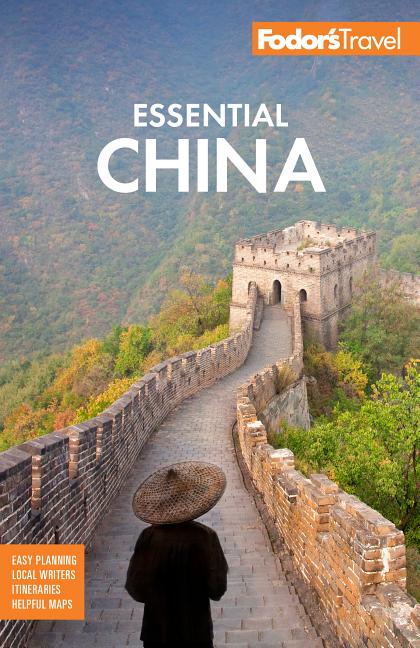Notable Architecture in Beijing
The 2008 Summer Olympics changed the look of the Chinese capital like never before. Whole city blocks were razed to make way for modern buildings, new hotels, and state-of-the-art sports facilities. The subway system has expanded from just two to 16 lines, with four more under construction. Just about everywhere you look you’ll find signs of the feverish development boom that didn’t end when the games left off. But the focus has switched from iconic Olympic venues and government-initiated state buildings—such as the extraordinary headquarters for the state-run TV network—to more commercially minded projects looking to mix architectural innovation with office space and shopping malls. Yes, China is rightly proud of its 5,000 years of history, but in terms of looking forward and not back, Beijing’s 21st-century projects—many designed by top international architects—are impressive to say the least.
Beijing Capital International Airport, Terminal 3
With its lantern-red roof shaped like a dragon, Beijing's airport expansion embraces traditional Chinese motifs with a 21st-century twist: its architect calls it "the world's largest and most advanced airport building." This single terminal contains more floor space than all the terminals at London's Heathrow Airport combined. Construction started in 2004 with a team of 50,000 workers and was completed a few months before the Olympic Games.
Architect: Norman Foster, the preeminent British architect responsible for global icons such as Hong Kong's widely respected airport, London’s "Gherkin" skyscraper, and the Reichstag dome in Berlin.
Beijing Linked Hybrid
With 700 apartments in eight bridge-linked towers surrounding a plethora of shopping and cultural options, including Beijing’s best art-house cinema, the Linked Hybrid has been applauded for parting from the sterility of typical Chinese housing. The elegant complex also features an impressive set of green credentials such as geothermal heating and a wastewater recycling system. Adjacent to the northeast corner of the 2nd Ring Rd.
Architects: New York–based Steven Holl—who has won awards for his contemporary art museum in Helsinki, Finland, and innovative "horizontal skyscraper" in Shenzhen—and Li Hu, who helped design China's first contemporary museum in Nanjing.
CCTV (China Central Television) Headquarters
Perhaps the most remarkable of China's new structures, the central television headquarters twists the idea of a skyscraper quite literally into a 40-story-tall gravity-defying loop. What some have called the world's most complex building (and what locals have nicknamed "The Big Pants") is also, with a $1.3 billion price tag, one of the world's priciest. An accompanying building that was to include a hotel, a visitor center, and a public theater was destroyed after it caught on fire during the Chinese New Year fireworks display in 2009. Due to the complex engineering involved, the secondary building remains under reconstruction. 32 Dong San Huanzhonglu (32 E. 3rd Ring Middle Rd.).
Architects: Rem Koolhaas (a Dutch mastermind known for his daring ideas and successful Seattle Public Library) and Ole Scheeren (Koolhaas's German protégé).
National Stadium ("the Bird's Nest")
Despite the heft of 42,000 tons of steel bending around its center, this 80,000-seat stadium somehow manages to appear delicate rather than clunky, with its exterior lattice structure resembling the twigs of an elegant nest—hence the nickname. Now used occasionally for events such as visiting soccer games and concerts, it’s an absolutely massive structure, and must be seen to be believed. Beijing Olympic Park at Bei Si Huanlu (N. 4th Ring Rd.).
Architects: The Herzog & de Meuron firm of Switzerland, which won the prestigious Pritzker Prize for converting London’s Bankside Power Station into the much-loved Tate Modern art gallery. The stadium also saw the involvement of leading Chinese artist Ai Weiwei as artistic consultant.
National Aquatics Center ("the Water Cube")
The translucent skin and hexagonal high-tech "pillows" that define this 17,000-seat indoor swimming stadium create the impression of a building fashioned entirely out of bubbles. The structure is based on the premise that bubbles are the most effective way to divide a three-dimensional space—and they help save energy and keep the building earthquake-proof. The center has now been turned into a public aquatics center and water park. Beijing Olympic Park.
Architects: PTW Architects, the Australian firm that cut its teeth on venues for the 2000 Olympic Games in Sydney.
National Center for the Performing Arts ("the Egg")
Located near Tiananmen Square, and completely surrounded by water, this bulbous opera house—a spectacular dome of titanium and glass known locally as "The Egg"—might cause passersby to think that some sort of spaceship has landed in the capital. Its close proximity to the Forbidden City, and its soaring costs (more than $400 million), earned it a hostile welcome among some Chinese architects, although it has now been embraced by the city thanks to its excellent program of classical music and refreshingly unconventional appearance. Xi Chang'an Jie (just west of Tiananmen Sq.).
Architect: French-born Paul Andreu, who designed the groundbreaking Terminal 1 of Paris's Charles de Gaulle airport in 1974, as well as working on the French capital's La Grande Arche.
Galaxy SOHO
Consisting of four huge amorphous globes, wrapped in curved white panels and flowing glass curtain walls, this mixed-use complex from one of the country’s largest property developers (SOHO China) continues the futuristic theme of The Egg. Opened at the end of 2012, it’s quite the statement: a bold continuation of the architectural ambition initiated by the Games, now transferred to the more functional world of office and retail space. Welcome to Beijing’s next chapter. E. 2nd Ring Rd. (next to Chaoyangmen subway station).
Architect: Iraqi-British starchitect Zaha Hadid—the first woman to win the Pritzker Prize—who made a splash in China prior to this with her opera house in the southern city of Guangzhou.




